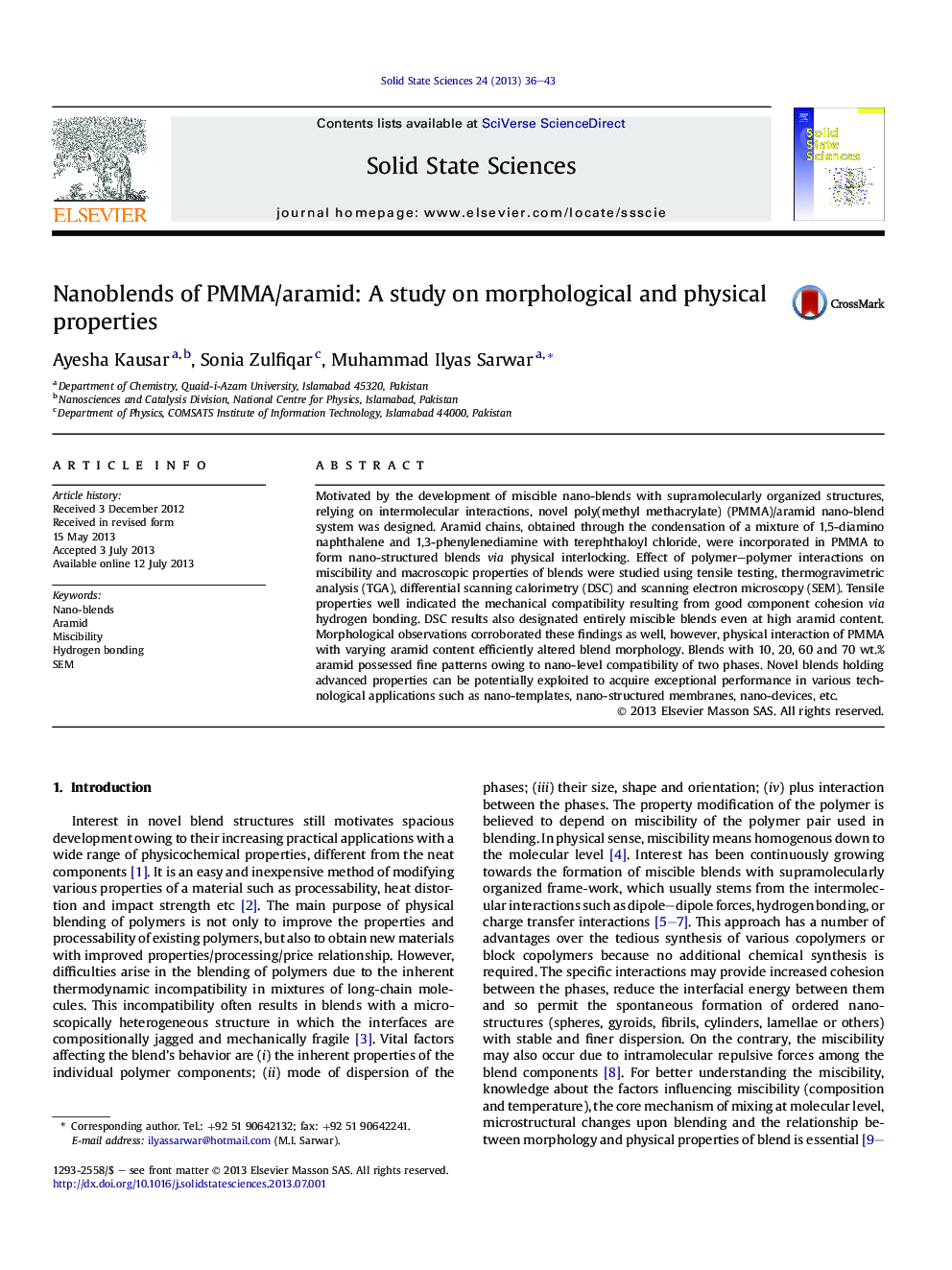| Article ID | Journal | Published Year | Pages | File Type |
|---|---|---|---|---|
| 1504526 | Solid State Sciences | 2013 | 8 Pages |
Motivated by the development of miscible nano-blends with supramolecularly organized structures, relying on intermolecular interactions, novel poly(methyl methacrylate) (PMMA)/aramid nano-blend system was designed. Aramid chains, obtained through the condensation of a mixture of 1,5-diaminonaphthalene and 1,3-phenylenediamine with terephthaloyl chloride, were incorporated in PMMA to form nano-structured blends via physical interlocking. Effect of polymer–polymer interactions on miscibility and macroscopic properties of blends were studied using tensile testing, thermogravimetric analysis (TGA), differential scanning calorimetry (DSC) and scanning electron microscopy (SEM). Tensile properties well indicated the mechanical compatibility resulting from good component cohesion via hydrogen bonding. DSC results also designated entirely miscible blends even at high aramid content. Morphological observations corroborated these findings as well, however, physical interaction of PMMA with varying aramid content efficiently altered blend morphology. Blends with 10, 20, 60 and 70 wt.% aramid possessed fine patterns owing to nano-level compatibility of two phases. Novel blends holding advanced properties can be potentially exploited to acquire exceptional performance in various technological applications such as nano-templates, nano-structured membranes, nano-devices, etc.
Graphical abstractFigure optionsDownload full-size imageDownload as PowerPoint slide
